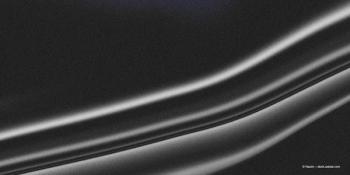
AAVIATE: Gene therapy via suprachoroidal drug delivery may lower treatment burden for patients with AMD
Rahul Khurana, MD, offers updates and details about the Aaviate study, which is investigating a possibly once-and-done gene therapy option for macular degeneration via suprachoroidal drug delivery.
Video transcript
Emily Kaiser [EK]: Hello, welcome. I'm Emily Kaiser, editor of Modern Retina. I'm sitting down with Dr. Rahul Khurana to discuss the Aaviate study. Dr. Khurana, can you tell us a little bit about the Aaviate data presented at the Angiogenesis meeting?
Rahul Khurana, MD [RK]: For sure, Emily.
Aaviate is a really exciting clinical trial that I've been involved with and at Angiogenesis this year, we presented the updated data on the first two cohorts. And so to give everyone kind of a background, obviously, gene therapy is a very exciting area of interest right now.
We know there's a lot of unmet needs in our treatments of macular degeneration. You know, these treatments often are very effective, but they require a lot of treatments. And there's a high burden with our current set of treatments out there, and gene therapy offers the potential for a one-time treatment to give us long-term, anti-VEGF suppression and really a long-term answer to this kind of chronic disease.
And so Aaviate is along with many gene therapy programs, or studies, that are looking to kind of tackle this. And the thing which is interesting about Aaviate is that most of gene therapy has really looked at it the traditional approaches. Either they’ve gone intravitreal, which is something we're very used to because we do these injections, or done a subretinal gene therapy delivery, which requires surgery, which is much more invasive. And Aaviate utilizes a suprachoroidal approach.
And the benefit of this is that we get good drug delivery of inhibiting anti-VEGF gene therapy, but by delivering it in the office. And one of the benefits of suprachoroidal delivery over intravitreal delivery is that in intravitreal, there is a potential for a lot of exposure of the medicine to not just the back of the eye, but also the front of the eye. And we've seen in some early gene therapy programs, a lot of complications involving inflammation and hypotony.
In a suprachoroidal approach, you can get a very high concentration to the retina with very low concentration to the anterior segment.
EK: That's really interesting. Has anything developed since the presentation?
RK: the study has been ongoing. So what I presented at Angiogenesis was the first two cohorts in the sense that those patients had been fully enrolled, and we had up to date up to six months. So that was really exciting. And we'll kind of delve into some of the details there. But there's still cohorts three, four, and five, which are now fully enrolled. So since that time, we've now fully enrolled those patients. And we're basically waiting to hear back on updates, or we were waiting to hear back those results. And we need to once they're fully enrolled, we need to have the subsequent time to see how these patients do.
EK: And what are the next steps?
RK: Part of the next steps for gene therapy is really to finish up the clinical study. The patients are all enrolled, which is wonderful. Now we want to see how they did in these higher enrolling cohorts. So one thing that we haven't talked about is what were the results that we actually found from the first two cohorts? And so as I mentioned before, Aaviate takes patients who have been previously treated so these patients who were in the study were basically patients who needed to get multiple injections.
On average, they average nearly nine injections in the previous year, which is about an injection every five weeks. And we took those patients who basically needed regular anti-VEGF therapy, and we basically offered them a super coronal injection of RGX-314, which involves a novel Aaviate vector, which encodes for an anti VEGF monoclonal antibody fragment, which is transduced, or basically transvexed, the patient's own retinal cells to produce anti-VEGF protein to effectively give you long term suppression.
And the data showed that in the first two cohorts where this was done, not only was the treatment quite safe, there was a very low rate of inflammation and no serious adverse events. But more impressively, that the number of treatments had gone down dramatically. The patients in the study were able to maintain their visual acuity, which was wonderful to see. But more importantly, the number of injections went down significantly.
As I told you, before, most of these patients needed about an injection every five weeks, and in the study, the number of injections went down nearly 70 to 79% than they had before receiving the gene therapy, they were able to maintain the visual acuity, maintain the retinal anatomy, and the number of patients who didn't even need injections was nearly 30% in the first cohort, and nearly 40% in the second cohort. And that was quite exciting because this truly was kind of delivering on the promise of a once-and-done therapy. But as I said before, we really need the long-term data to kind of see how this translates and also we need to see how higher doses if we can get better efficacy and also maintain a very good safety profile.
EK: Wow. So what does this mean for clinicians and for patients?
RK: I think it offers a really exciting hope for both our patients and physicians. As we mentioned before, we have a lot of treatment options for anti-VEGF therapy and they do work very well. The problem is that they require a lot of treatments and there's a high treatment burden, and this is challenging for patients because not all patients can come back in there's a high rate of lost to followup, non-compliance, and non-adherence to the treatment regimens. And we've seen in Phase 3 clinical studies, especially in follow up in real world practice that when patients are not getting regular treatments, they lose vision. And that's why we've it's been hard to replicate the excellent results we've seen in the Phase 3 studies in real world practice. And the hope is that if one of these gene therapy treatments can work, we can offer a really one-and-done or a much more sustainable treatment therapy for our patients, which ultimately lead to better compliance and better visual outcomes.
EK: Fantastic. Well, thank you so much for the update.
RK: My pleasure. Thanks for having me.
Note: This transcript has been lightly edited for clarity.
Newsletter
Keep your retina practice on the forefront—subscribe for expert analysis and emerging trends in retinal disease management.










































